When the early Portuguese navigators were exploring the coasts of Africa and India in search of the Kingdom of Prester John, they happened to come accross Parsee colonies somewhere on the coast of the present State of Gujarat in India. Because of their fair complexion, a distinct culture and similar religion to that of Christianity, the Portuguese took them to be subjects of the legendary monarch Prester John and quickly reported to their King in Lisbon of the find.
An American woman, Rebecca Chase Kinsman, who lived in Macau in the middle of the 19th century, wrote a letter on 4th November, 1843, telling her family about Macau and its variety of inhabitants. In this letter she reveals of Parsees: "Of all the people I admire most are the Parsees. They are many here and some of them are very rich. Their dress is very strange but beautiful and most of them are handsome and have an athletic appearence. I have their picture which I send you herewith, to give an idea of their appearence."
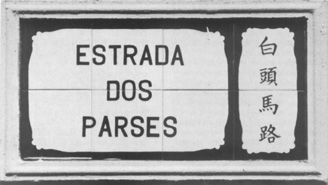 A road named after Parsees is in itself an important evidence of the Parsee's presence in Macau.
A road named after Parsees is in itself an important evidence of the Parsee's presence in Macau.
The Parsees are a people of white aryan race, originally dwelled in Persia till the year 640 A. D. When their country was conquered by Arabs, a majority submitted to the conquerors but the remaining others ran away in the mountainous region of Khurdistan. And a few years after, they abandoned their country and sailed to far-away India. In this country, the tolerance of Hinduism and Buddhism made their stay possible keeping their customs, culture and religion intact.
When the early Portuguese navigators were exploring the coasts of Africa and India in search of the Kingdom of Prester John, they happened to come accross Parsee colonies somewhere on the coast of the present State of Gujarat in India. Because of their fair complexion, a distinct culture and similar religion to that of Christianity, the Portuguese took them to be subjects of the legendary monarch Prester John and quickly reported to their King in Lisbon of the find.
Meanwhile, the Portuguese occupied the Bassein archipelago on the West Coast of India, which included the island of Bombay and Thana. Simultaneously, they also extended their influence up to Surat. The Parsee colonies there placed themselves to the service of the Portuguese. The Portuguese, admiring the level of their civilization, employed them as intermediaries and formen in their factories in Bombay and in other neighbouring places. Many of them also served there as clerks, cashiers, brokers, as well as coachman and personal assistants.
A big number of Parsees arrived in Bombay from Surat during the Portuguese dominion of the island. During the Portuguese presence, the Parsees in Bombay constructed over fifty fire temples without including the innumerable private places of fire--worship. The first Parsee who established with his family in Bombay was known Dorabjee Nanbai. He is the one who constructed at Malabar Hill, then a deserted mountainous place, and today a fine residential quarter, the first dakma or the tower of silence.
When the English established in these places, they appreciated the loyalty of Parsee settlers in Bombay and gave them an opportunity to work as intermediaries between the administrators and the natives. And later on, while the port of Bombay also simultaneously grew more and more prosperous.
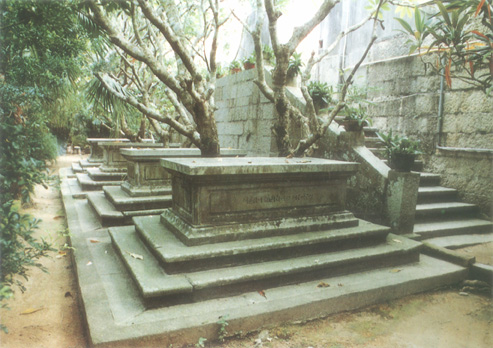 The tombs in row inside the old Parsee Cemetry in Macau
Photos by M. Cardoso
The tombs in row inside the old Parsee Cemetry in Macau
Photos by M. Cardoso
With the declining of the trade in Bombay, the Parsees somewhere in the 1770's transferred their business in Macau - a Portuguese enclave on South China coast - and also established in Canton.
In the year 1779, a young Parsee of sixteen years of age, by name of Jamsetjhee Jejheebhoy, came to work as clerk in the firm of his cousin in Canton. After some years, with his earnings, he went back to Bombay and founded his own firm, which with the passing of time became the biggest in that city. For his dedication and philantrophy, the british bestowed upon him the title of baron. And he also turned to be the first one of his race to be honoured thus by the British.
Meanwhile, the Portuguese occupied the Bassein archipelago on the West Coast of India, which included the island of Bombay and Thana. Simultaneously, they also extended their influence up to Surat.
The Parsee colonies there placed themselves to the service of the Portuguese. The Portuguese, admiring the level of their civilization, employed them as intermediaries and formen in their factories in Bombay and in other neighbouring places. Many of them also served there as clerks, cashiers, brokers, as well as coachman and personal assistants.
In the year 1822, Jejheebhoy nominated William Jardine as his agent in Canton. Jardine's firm known with the name of "Jardine, Matheson & Co.," had its headquarters in Macau at Rua do Hospital, and today known Rua Pedro Nolasco da Silva. When "Jardine, Matheson & Co.," transferred its headquarters to Hong Kong, the business link with Jamsetjhee Jejheebhoy was kept. Jejheebhoy died in the year 1859 but the business association with "Jardine, Matheson & Co.," was maintained for many generations.
With the declining of the trade in Bombay, the Parsees somewhere in the 1770's transferred their business in Macau and also established in Canton.
As the presence of the Parsee community increased in Macau, in the year 1829, the Parsees constructed their cemetry there. But with the founding of the British Colony of Hong Kong in 1841, the Parsee community of Macau gradually moved to that place. Today, there are no Parsees in Macau, however their cemetry with several clean and polished tombs still lies there.
On one of the stone tombs, there is found an engraved wording as follows: 'This monument is erected to the sacred memory of Pestonjee Cowasjee Darabsha Setha Esqre. The founder of the firm of Cowasjee, Pallarjee and Co., of China, who departed this life, 18th August 1842. By his descendents, 31st July, 1919.'
As the presence of the Parsee community increased in Macau, in the year 1829, the Parsees constructed their cemetry there.
But with the founding of the British Colony of Hong Kong in 1841, the Parsee community of Macau gradually moved to that place. Today, there are no Parsees in Macau, however their cemetry with several clean and polished tombs still lies there.
Pestonjee Cowasjee Darabsha Sethna Esqre., is the founder of the firm of Cowasjee Pallarjee and Co., of China. His firm's ships were amongst the most famous clippers on the run from India to Macau, and possibly his best known ship, the Cowasjee Family, plied to China route from 1836 to 1861, when it was sold to the Sultan of Oman. Another of his ships, the Rustomjee Cowasjee, went missing with 800,000 dollars on board sometime after rounding Singapore, on its way from Calcutta.
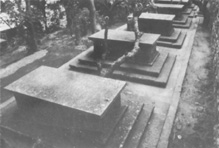
There is also a road in Macau known Estrada dos Parses. The Chinese name for the Parsee Road is Pak T'au Má Lou (White Head Road) for the Chinese in Macau called the Parsees the white headed men because of their wearing scarf round their head.
Moreover, it is also interesting to know of Sir Hormusjee Mody who by his philantrophy made it possible of the founding of the Hong Kong University. This great man had his roots in Macau. And, at the same time, none in Macau and Hong Kong can forget the indomitable Dorabjee Nowrojee, who started as a merchant in Macau and then went to live in Hong Kong, and established a boat transport company between Hong Kong island and Kowloon, linking each boat the name of stars- The Morning Star, The Evening Star, The Rising Star and The Guiding Star. The company still exists there today and is popularly known with the name of "Star Ferry Company."
HOW THE PARSEES CAME TO WORSHIP FIRE
In Persia there is a city which is called Saba from whence the three Magis came to adore Christ in Bethlem. One was called Balthasar, the second Jaspar, and the third Melchior. They carried with them three offerings, namely; Gold, Frankincense, and Myrrh in order to ascertain whether the Prophet were God or an earthly King or a Physician. For said they, if he takes the Gold, then he is an earthly King; if he takes Incense he is God; and if takes the Myrrh, he is a Physician.
When these Magis were presented to Christ, they at once worshipped him; and when they went away, the infant gave them a closed box, which they carried with them for several days. Then becoming curious to see what he had given them, they opened the box and found in it a stone. When, however, they saw the stone, they marvelled, and thinking themselves deluded, they threw stone into a certain pit, and instantly fire burst forth in the pit.
When they saw this, they repented bitterly of what they had done, and taking some of the fire with them carried it home. And having placed it in one of their temples, they kept it continually burning, and adore that fire as a god, and make all their sacrifices with it. And if ever it happen to be extinguished, they go for to the original fire in the pit which is never extinguished. And thus the Parsees came to be known as Fire-Worshippers.
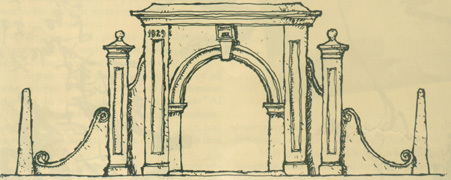
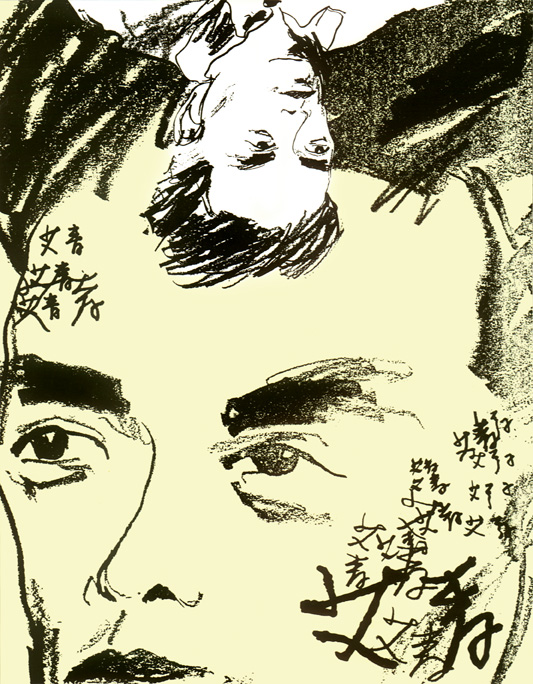
Illustrations by Carlos Marreiros © Copyight
start p. 40
end p.